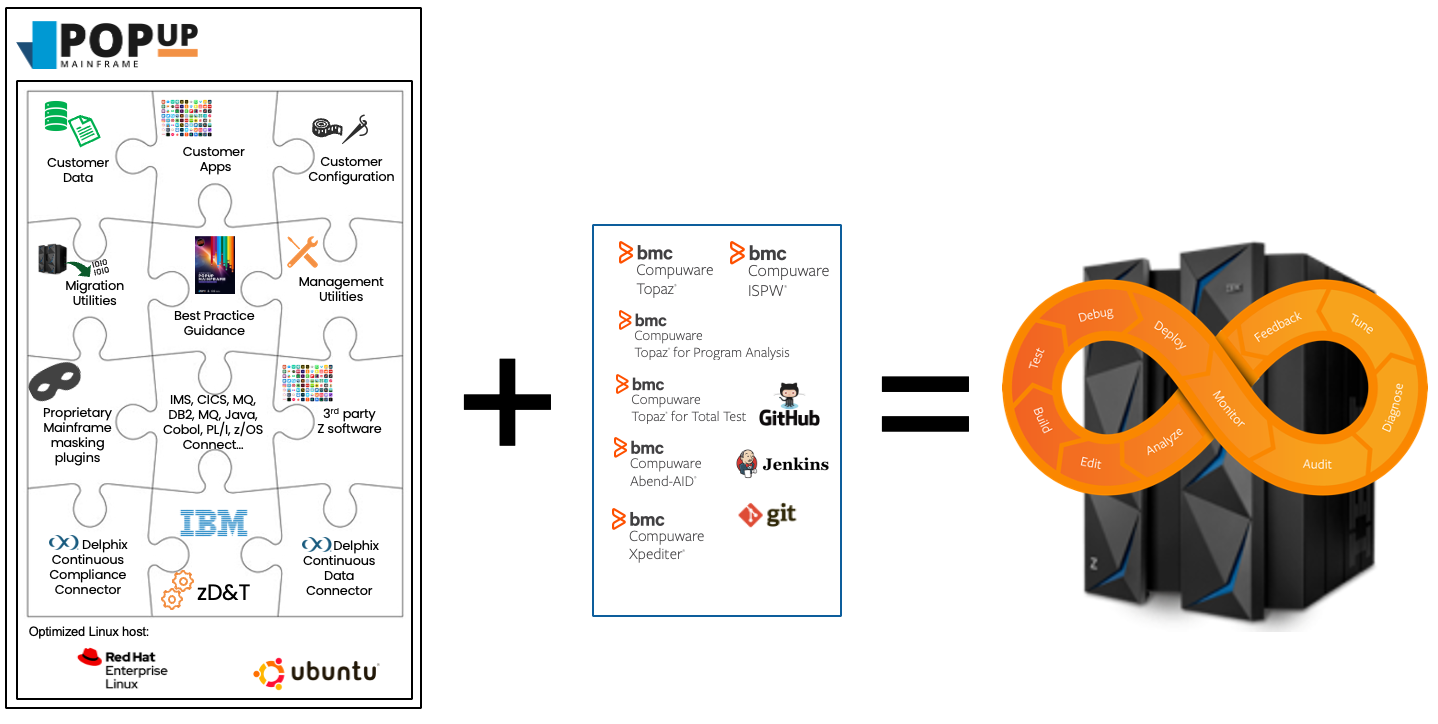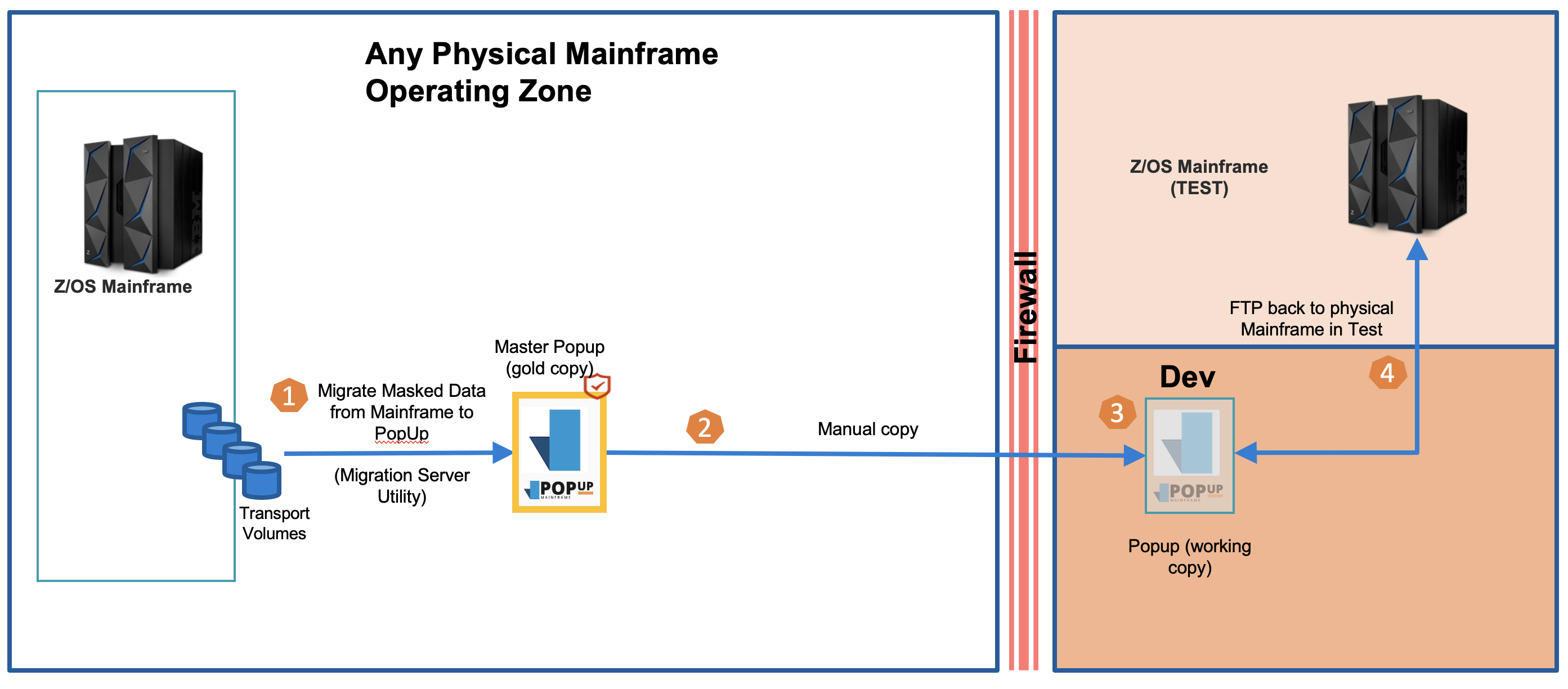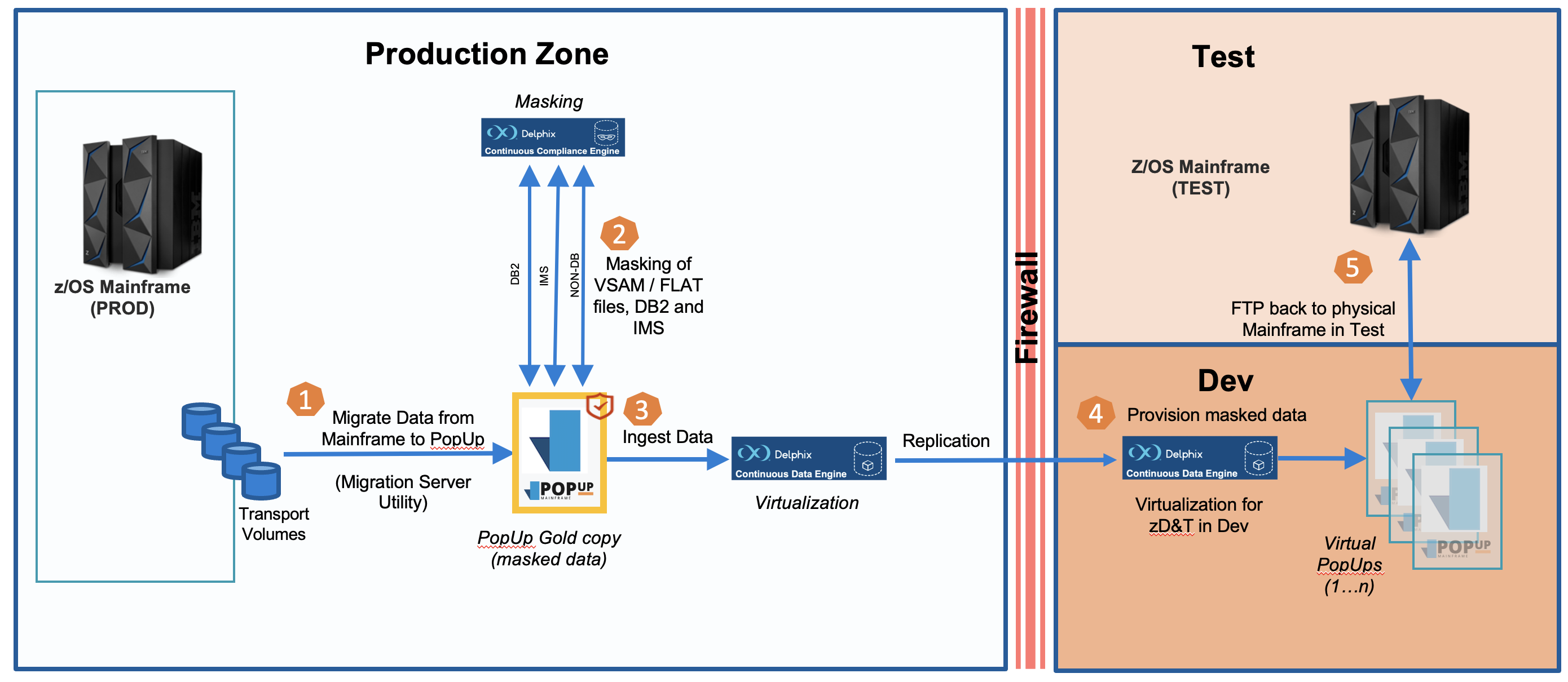What is PopUp Mainframe?
The PopUp Vision
PopUp Mainframe was born from a simple idea: what if we could make deploying real mainframe capability as simple as spinning up a virtual machine image on any x86 machine?
Well, it took some truly concerted effort and a lot of manpower but that's exactly what we have built.
Learn more about the PopUp Vision.
Introduction to PopUp Mainframe from PopUp Mainframe.
The Challenge of Mainframe Environments
All mainframe clients have a common problem: The shortage of non-prod environments for development and test.
PopUp directly addresses this with instantly available, fully functioning mainframes.
It's easy to make PopUp look and behave exactly the same as your physical mainframe environments as you can install any mainframe subsystem or bespoke application on your PopUp. We also provide migration utilities to make the conversion of mainframe data to your PopUp mainframe simple.
PopUp revolutionizes your mainframe SDLC, accelerating delivery and cutting hardware costs.
How does PopUp work?
PopUp Mainframe comes packaged as a fully featured, optimized virtual machine image which can be run on any x86 architecture, on-premise or in the cloud. This provides a turnkey solution enabling rapid, elastic deployment of z/OS capability suitable for all non-production use cases (including dev, test, training, issue replication & troubleshooting).
Learn more about PopUp use cases.

A PopUp Mainframe image consists of an optimized Red Hat Enterprise Linux distribution, with pre-installed and pre-configured IBM's ZD&T software, a popular selection of IBM's Enterprise software offerings and a bunch of handy utilities from us to make everything run sweetly.
A PopUp mainframe is functionally equivalent to running a physical mainframe: it can be used for any non-prod purpose you might use a physical mainframe for.
Note: the software license excludes performance testing and production environment use.
Using PopUp
 The PopUp Lifecycle diagram shows the typical lifecycle of a PopUp, including:
The PopUp Lifecycle diagram shows the typical lifecycle of a PopUp, including:
- installing and tailoring your PopUp
- moving applications and data across
- creating a PopUp Gold Image
- and integrating with Delphix for virtualisation and masking if applicable
Our Best Practice guidance helps you to get the most out of your PopUp.
What is the Difference Between PopUp and ZD&T?
What is the Difference Between PopUp and ZD&T? from PopUp Mainframe.
PopUp Mainframe is built on IBM's tried and trusted ZD&T software. However, ZD&T is complex to install and configure, requiring a significant time investment from senior resources across many diferent teams. And that's just to get z/OS working properly.
What differentiates PopUp Mainframe from a self installed and configured ZD&T instance is the years of subject matter expertise we have built up to make the adoption of ZD&T as quick and painless as possible.
Platform
The standard PopUp image contains the following pre-configured IBM capabilities, ready to run. (Using standard ZD&T, these would need to be installed & configured by you.):
- CICS
- IMS
- Db2
- MQ
- and more...
Full list of subsystems, applications, and utilities which come with the PopUp.
PopUp overcomes multiple challenges around reliably provisioning ZD&T mainframe environments. The supplied image encapsulates the learning and experience the PopUp team have built up over the years and includes many handy utility programs to streamline common administrative tasks. Such as:
- Data and application migration
- Allocation and management of storage volumes
- Start & stop scripts
- Master console message interaction and automated action trigger routines
Stand Alone PopUp
The stand alone "vanilla" PopUp Mainframe ships with the pre-installed components mentioned here.
Overview
- Data and applications are migrated from the physical mainframe to the PopUp, to build a "Gold copy PopUp". This gold copy would typically be sanitized by masking data.
- "Gold copy PopUp" images are used to create working copies for any non-production environment.
- A working instance of the "Gold copy PopUp" is stood up in the dev environment.
- Once the use case is complete, changes are promoted to the physical mainframe test environment.
For more information, see PopUp Architecture & Integrations.
Delphix Integrated PopUp
We partner with Delphix to provide industry leading solutions for data masking and data virtualization on the mainframe. We have created innovative plugin capabilities which provide access to game changing agility with minimal effort on your part.
Overview
- Data and applications are migrated from the physical mainframe to the PopUp, to build a "Gold copy PopUp". This gold copy would typically be sanitized by masking data.
- Masking of sensitive data is automatically actioned using Delphix Continuous Compliance engine (masking).
- The secure, "Gold copy PopUp" is ingested into the Delphix Continuous Data Engine (virtualization).
- A working instance of the "Gold copy PopUp" is stood up in the dev environment.
- Once the use case is complete, changes are promoted to the physical mainframe test environment.
For more information, see PopUp Architecture & Integrations.
PopUp & BMC for CI/CD
We have partnered with BMC to make their popular DevOps tooling available, pre-configured and pre-integrated for your convenience.

For more information, see PopUp Architecture & Integrations.
PopUp in the Cloud (Azure)
From Azure MarketPlace, you can have your own PopUp Mainframe running in the cloud in minutes.
The PopUp virtual machine has been built, configured and performance tested to run optimally in Azure cloud. It gives the excellent performance and reliability you expect from Azure infrastructure.
For more information, see PopUp Architecture & Integrations.
The PopUp Image
The PopUp Mainframe virtual machine image runs on Red Hat Enterprise Linux or Ubuntu. See Release Notes for details.
Learn more about the configuration and supported versions of subsystems, applications, and utilities which come with the PopUp.
Learn more about PopUp architecture and integrations with third party tools, e.g. Delphix, BMC.
Page last revised on: 2025-04-24


